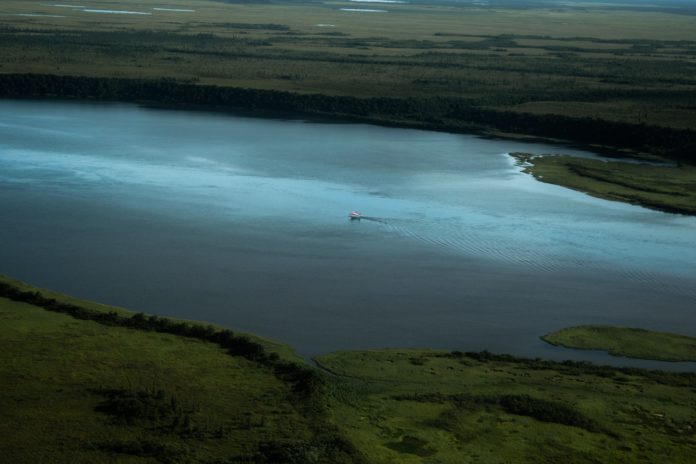State fisheries biologists are forecasting a run of 37.9 million fish coming into Bristol Bay this summer, with a potential inshore surplus of 25 million reds, in the world’s largest wild sockeye salmon fishery.
The commercial salmon season in Bristol Bay opens on June 1, but the first big surge of the returning sockeyes traditionally occurs around the Fourth of July. The fishery is managed on the basis of in-season abundance and run timing for each district.
Alaska Wildlife Troopers said they are concerned about underreporting of Chinook salmon harvested in the Bristol Bay fishery and that they will be boarding tenders to check for undocumented kings. Also Pacific salmon, including king and coho, must be reported on fish tickets at time of delivery even when taken but not sold.
Wildlife Troopers also said they will be conducting routine boardings of draft gillnet and processor vessels and beach patrols to verify licensing and permitting regulations are met. Vessel length, net length, net depth, and vessel and gear identification markings also are to be checked.
Fishermen are also reminded to review regulations for gillnet specifications and operations. Regulations prohibit draft gillnet fishing when the net or vessel to which the net is attached is grounded.
Fishing in eastside districts and the Togiak District will be allowed using a weekly schedule that varies by section. These schedules are in place to balance fishing opportunity with escapement in the early part of the season, particularly for king salmon. Fishing time will be adjusted within individual districts as each run develops and sockeye salmon run characteristics become defined, state biologists said.
In the Nushagak District, management will follow the Nushagak King Salmon Action Plan, with the focus on king salmon in the early part of the season, and switch to sockeye management as abundance and regulation dictates.
An inshore run of some 15 million sockeyes is expected for the Naknek-Kvichak District. Based on the forecast and escapement goals, the projected surplus for the Naknek-Kvichak is about 8.1 million sockeyes, 2.5 million from the Kvichak River, 1.1 million from the Alagnak River, and 4.4 million from the Naknek River. Red salmon returning to the Naknek-Kvichak District are predicted to be 53% age 1.2, 32% age 1-3, 10% age 2.2, and 5% age 2.3 fish.
The 2024 Egegik River inshore run is forecast at about 5.5 million sockeyes, with an escapement goal of 800,000 to 2 million fish, and potential surplus of 4.4 million fish. Estimates are that 43% of the run will be age 2.2 fish, 32% 1.2 fish, 14% 2.3 fish, and 11% 1.3 fish.
In the Ugashik District the 2024 forecasted inshore run of sockeyes is 4.6 million fish. With an escapement goal of 500,000 to 1.4 million sockeye salmon, the potential surplus is 3.5 million. About 64% of the run is expected to be age-1.2, 17% age-2.2, 14% age-1.3, and 4% age-2.3 fish.
The Nushagak District sockeye salmon inshore run forecast is approximately 12.1 million fish: 3.8 million for escapement with a potential surplus of 8.3 million. Under the guidance of the Nushagak River King Salmon Action Plan it is possible that the potential surplus may not be completely harvested, state biologists said.
The total inshore run by river system is as follows: Wood River, 7.8 million (escapement goal range 700,000 to 3 million); Igushik River, 1.1 million (escapement goal range 150,000 to 400,000); and Nushagak River, 3.5 million (escapement goal range of 370,000 to 1.4 million). Approximately 50% of the forecasted run is expected to be age 1.2 sockeye salmon, followed by 43% age 1.3, 3% age 2.2, and 6% age 2.3 fish.
In the Togiak District, an inshore run of 680,000 fish is forecast with a potential surplus of 520,000 fish.
The escapement goal range is 120,000 to 270,000 sockeye salmon. Approximately 63% is expected to be age 1.3; 36% of the run is expected to be age 1.2; and <1% of the run is expected to be ages 2.2 and 2.3.
ADF&G acknowledged the Bristol Bay Fisheries Collaborative (BBFC) for continued financial, operational, and logistical support of Bristol Bay salmon fishery management. BBFC is an agreement between the department and the Bristol Bay Science and Research Institute (BBSRI) to work together with stakeholders to support fisheries management. Additionally, the department thanked BBSRI and Bristol Bay Regional Seafood Development Association for their funding and efforts to operate the Port Moller Test Fishery.














